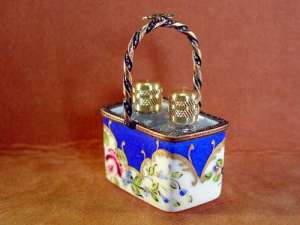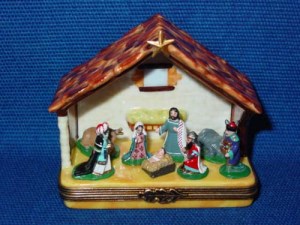Identifying the Various Marks on Traditional Limoges Boxes
From the time when the beautiful damsels of the European nobility used to flaunt their trinket snuff boxes in the 19th century, French porcelain had been synonymous with the exquisitely manufactured and painted Limoges boxes.
The factory in Sevres was the first to witness the blossoming of this beautiful piece of craftwork from white clay called Kaolin molded and designed by dexterous artisans Today, you find a plethora of manufacturers creating their own trademark designs using the distinctive French Porcelain produced in the Limoges area of France.
However, just like any other work of art, the Limoges boxes have also become the butt of fraudulence with the result that the market is flooded with fake boxes obtained at unbelievingly low prices. In order to understand the value and authenticity of Limoges boxes, you have to be aware of the marks that come on the traditional limoges boxes.
Factory or Maker: The maker’s mark denotes the factory where the white Kaolin is turned into whiteware or blank through casting and firing processes. The impression is made on the porcelain prior to the above processes. It can be seen under the glaze usually bearing the words “Limoges France” or numbers, colors or scripts as preferred by the manufacturer. You might also come across specific symbols like butterfly, bird, or star.
Decorator’s Mark: The decorator’s mark is visible over the glaze and may come in handwritten, stamped or printed forms. Decorating companies generally go for printed or stamped marks, while individual artisans prefer writing by hand. In case where the maker and decorator are same, the manufacturer generally adds a second type of mark for the boxes it manufactures as well as decorates and a different mark for the pieces, which it only manufactures and sells as undecorated whiteware.
The decorator’s mark reflects the way the Limoges porcelain was designed or decorated by the artisan. Hence, the words Peint Main denotes that the decoration was done completely by hand and Rehausse Main means the highlighting streaks were made by hand along with a combination of decals. On the other Décor Main depicts that some part of the decoration had been created by hand. The stamp of the artist might be inscribed in initials or signature form.
Importer’s Mark: Limoges porcelain may be associated with thousands of companies manufacturing these enticing pieces of art. However, there are very few companies who have shot up as being top-notch manufacturers and importers, giving the items their brand name. Some of the famous importers Artoria Limoges, Rose Décor, Chamart Exclusives Inc, Rochard Limoges boxes, Sinclair, La Gloriette, Chanille and the likes. The peculiar designs on the porcelain also point at specific manufacturers. For example fruit designs on Rochard boxes take up larger dimensions that those by others.
Mold Marks: The boxes are cast in three-dimensional molds, which are immaculately created from the Kaolin clay. A single mold is made to create a few boxes with unique designs. However, the number of boxes from each mold cannot exceed 100 since by that time the mold’s detailing is eradicated. The mold number is also indicated in each trinket box.
Limoges boxes of Limited editions have special registered trademark as well as the signature of the particular artist.


No comments:
Post a Comment